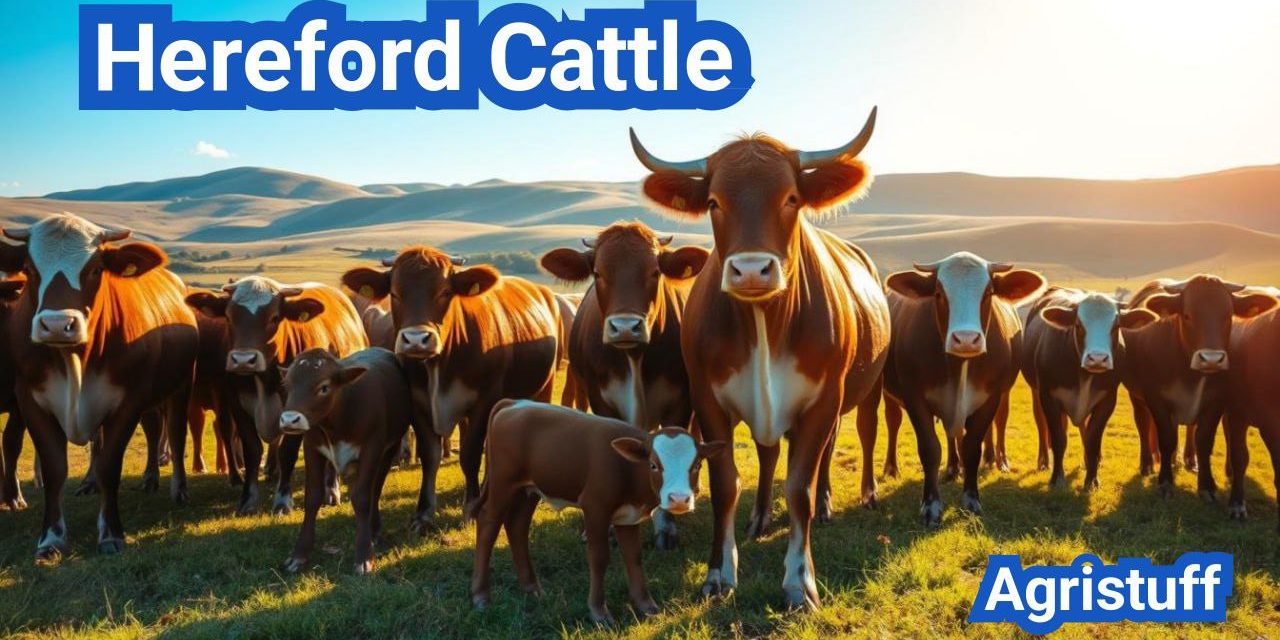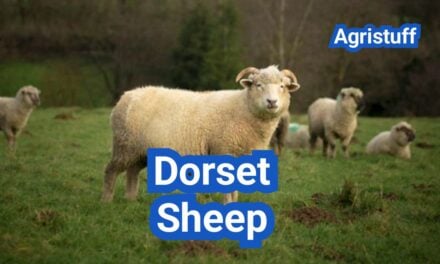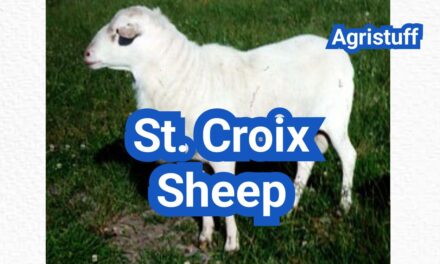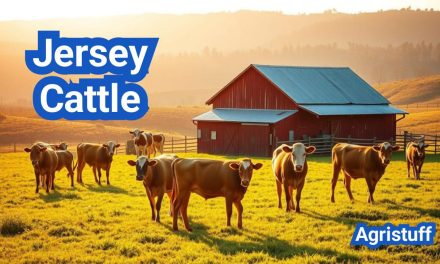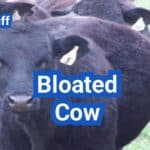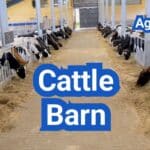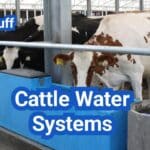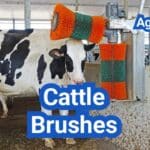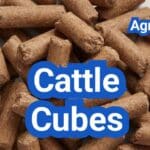The Hereford breed originated in Herefordshire, England, and was developed for beef production. Known for their hardiness and fast growth rate, Hereford cattle are a popular choice among farmers.
They offer several advantages, including their ability to thrive in various conditions and their high-quality beef. However, like any breed, they also have their drawbacks, such as potential issues with temperament and specific dietary needs.
This article will explore the characteristics, benefits, and challenges of raising Hereford cattle, providing a comprehensive overview for those involved in livestock farming.
Key Takeaways
- Origin of Hereford cattle and their historical significance in beef production.
- Advantages of Hereford cattle, including hardiness and fast growth rate.
- Common challenges faced by farmers when raising Hereford cattle.
- Key characteristics that make Hereford cattle suitable for various farming conditions.
- Future prospects and considerations for Hereford cattle farming.
The History and Origin of Hereford Cattle
The history of Hereford cattle is a rich narrative that spans centuries, originating in the lush landscapes of Herefordshire, England. This breed, known for its hardiness and beef production, has a storied past that reflects the agricultural practices and breeding innovations of its time.
Development in Herefordshire, England
In the 1700s, the foundations of the Hereford breed were laid in Herefordshire, a county in the West Midlands of England. Local farmers selectively bred cattle to create a robust and fertile animal that could thrive in the region’s climate. The result was a breed characterized by its distinctive red and white coloring and a strong constitution.
The development of Hereford cattle was influenced by the agricultural needs of the time. Farmers required cattle that could not only produce high-quality beef but also withstand the local climate conditions. Through careful breeding, the Hereford breed emerged as a premier choice for both its meat production qualities and its hardiness.
Introduction to North America
The introduction of Hereford cattle to North America marked a significant milestone in the breed’s history. Brought across the Atlantic, these cattle were prized for their adaptability and beef production capabilities. The breed quickly gained popularity among American ranchers, who valued its hardiness and the quality of its meat.
“The Hereford breed has been a cornerstone of American cattle ranching, offering a unique blend of hardiness, fertility, and beef quality that has made it a favorite among ranchers.”
Henry, a veteran rancher
Evolution of the Breed Over Time
Over the centuries, the Hereford breed has continued to evolve, shaped by advances in breeding techniques and changing agricultural practices. Today, Hereford cattle are found worldwide, prized for their versatility and the quality of beef they produce.
| Period | Significant Events | Impact on the Breed |
|---|---|---|
| 1700s | Initial breeding in Herefordshire, England | Establishment of the breed’s foundational characteristics |
| Late 1700s to Early 1800s | Selective breeding for hardiness and beef quality | Development of the breed’s distinctive traits |
| 19th Century | Introduction to North America | Expansion of the breed’s global presence |
The evolution of the Hereford breed is a testament to the power of selective breeding and the adaptability of cattle to different environments. As agricultural practices continue to evolve, the Hereford breed remains a significant player in the global beef industry.
Understanding Hereford Cattle Characteristics

Hereford cattle are renowned for their distinctive characteristics, which make them a popular choice among beef producers. Their unique traits not only contribute to their hardiness and productivity but also make them an attractive option for farmers worldwide.
Distinctive Red and White Coloration
One of the most recognizable features of Hereford cattle is their red and white coloration. This distinctive coloring is not just aesthetically pleasing; it also serves as a breed standard. The red coat can vary in shade, ranging from a deep cherry red to a more orange-red hue, while the white markings are typically found on the face, belly, and feet.
The breed’s coloration is a result of selective breeding, which has emphasized these visual characteristics over generations. According to the American Hereford Association, the breed’s color pattern is one of its defining features.
“The Hereford breed is known for its hardiness, efficiency, and productivity. Its distinctive red and white coloring makes it one of the most recognizable cattle breeds worldwide.”
Size and Weight Specifications
Hereford cattle are known for their medium to large size. Mature cows typically weigh between 1,000 to 1,200 pounds, while bulls can weigh between 1,800 to 2,200 pounds. Their size and weight make them well-suited for beef production, as they can efficiently convert feed into high-quality beef.
| Category | Weight Range (lbs) |
|---|---|
| Mature Cows | 1,000 – 1,200 |
| Mature Bulls | 1,800 – 2,200 |
Structural Features and Conformation
The structural features and conformation of Hereford cattle are crucial to their functionality and productivity. They are known for their muscular build, with a deep, well-sprung ribcage and a straight or slightly convex profile. Their legs are strong and well-set, contributing to their overall hardiness and ability to forage effectively.
Key structural features include:
- A robust skeletal system
- A well-defined musculature
- A deep, wide chest
- Strong, well-placed legs
These characteristics, combined with their distinctive coloration and size, make Hereford cattle a valuable asset for beef producers. Their hardiness and productivity contribute to their popularity in various farming systems around the world.
Types of Hereford Cattle
There are multiple types of Hereford cattle, each with distinct features and advantages. The breed has been developed over time to cater to various farming needs and preferences.
Standard Horned Hereford
The Standard Horned Hereford is one of the original types of Hereford cattle. They are known for their distinctive horns and robust build.
Characteristics: They have a muscular build and are well-adapted to various climates. Their horns are a defining feature, often used for defense.
Polled Hereford Varieties
Polled Herefords are a variation that has been bred to be naturally hornless. This trait is preferred by some farmers due to safety and handling advantages.
Advantages: The absence of horns reduces the risk of injury to both the animals and handlers. Polled Herefords are also easier to manage in certain farming systems.
Black Hereford Development
Black Herefords are a cross between a Hereford and an Angus, resulting in a black-coated animal that retains many of the desirable traits of Herefords.
Features: They combine the hardiness of Herefords with the high-quality beef production characteristics of Angus cattle.
Miniature Hereford Cattle
Miniature Herefords are a smaller version of the traditional Hereford, bred for their compact size and lower feed requirements.
Uses: They are often kept as pets or used in small-scale farming operations due to their manageable size.
| Type of Hereford | Key Characteristics | Advantages |
|---|---|---|
| Standard Horned | Muscular build, distinctive horns | Robust, climate-adapted |
| Polled Hereford | Naturally hornless | Easier handling, safer |
| Black Hereford | Black coat, combines Hereford and Angus traits | Hardy, high-quality beef |
| Miniature Hereford | Compact size, lower feed requirements | Manageable, suitable for small farms or pets |
Hereford Cattle Breed Traits

Hereford cattle are renowned for their exceptional breed traits, making them a popular choice among cattle farmers. Their adaptability, foraging ability, and longevity are some of the key characteristics that contribute to their widespread acceptance.
Adaptability to Various Climates
One of the standout features of Hereford cattle is their adaptability to various climates. They can thrive in different environmental conditions, from the temperate climates of their origin in Herefordshire, England, to the diverse climates found in North America and other parts of the world. This adaptability makes them an excellent choice for farmers in various regions.
Foraging Ability and Feed Efficiency
Hereford cattle are known for their exceptional foraging ability and feed efficiency. They can effectively utilize pasture resources, making them a cost-effective option for farmers. Their ability to convert feed into high-quality beef is a significant advantage, contributing to their popularity in the beef industry.
Longevity and Hardiness Factors
The longevity and hardiness of Hereford cattle are other critical factors that contribute to their success. They are known for their robust health and ability to withstand challenging conditions, which reduces the need for frequent veterinary interventions and enhances their overall productivity.
In summary, the breed traits of Hereford cattle, including their adaptability, foraging ability, and longevity, make them an attractive option for cattle farmers. Their ability to thrive in various climates and efficiently utilize feed resources contributes to their hardiness and productivity.
How to Work with Hereford Temperament
With their calm demeanor, Hereford cattle offer farmers a manageable and productive livestock option. Understanding and working with their temperament is key to a successful farming operation.
Managing Their Docile Nature
Herefords are known for their docile nature, which makes them an excellent choice for farmers, especially those who are new to cattle farming. Their calm temperament simplifies handling and management, reducing the risk of injury to both the animals and the handlers.
To manage their docile nature effectively, farmers should:
- Move calmly and quietly around the cattle to avoid startling them.
- Avoid sudden movements or loud noises.
- Ensure that the cattle are handled gently and with care.
Handling Hereford Bulls Safely
While Herefords are generally docile, bulls require special attention. Handling Hereford bulls safely involves understanding their behavior and taking necessary precautions.
Key safety measures include:
- Keeping bulls in secure, escape-proof enclosures.
- Using experienced handlers who are familiar with bull behavior.
- Ensuring that bulls are not overly aggressive by monitoring their behavior and health.
Training and Handling Best Practices
Effective training and handling of Hereford cattle involve a combination of gentle handling, consistent routines, and positive reinforcement.
Best practices for training include:
- Starting with young animals to establish good handling habits.
- Using positive reinforcement techniques, such as offering feed rewards.
- Ensuring that all handlers are consistent in their commands and handling techniques.
Breeding and Reproduction Management

Effective breeding and reproduction management are crucial for the success of Hereford cattle farming. Herefords are renowned for their calving ease and strong maternal traits, making them an excellent choice for many farmers.
Calving Ease and Maternal Traits
One of the standout features of Hereford cattle is their ease of calving. This characteristic, combined with their strong maternal instincts, ensures that calves are born healthy and well-cared for. The breed’s maternal traits are a result of generations of selective breeding, focusing on fertility and the ability to nurture their young effectively.
Key Benefits of Hereford Maternal Traits:
- Easy calving process
- High fertility rates
- Strong mothering ability
- Calves with good vigor at birth
Breeding Season Strategies
Developing an effective breeding season strategy is vital for maximizing the reproductive potential of Hereford cattle. This involves careful planning, including the selection of breeding stock, timing of the breeding season, and nutritional management to ensure optimal fertility.
| Strategy | Description | Benefits |
|---|---|---|
| Synchronized Breeding | Synchronizing the estrous cycle of females to breed them over a compact period. | Tighter calving season, easier management |
| Nutritional Management | Ensuring breeding stock are at an optimal body condition score. | Improved fertility, healthier calves |
| Sire Selection | Choosing bulls with proven fertility and desirable traits. | Better genetic progress, improved herd quality |
Genetic Selection for Improvement
Genetic selection is a powerful tool for improving the productivity and quality of Hereford cattle. By selecting for desirable traits such as growth rate, fertility, and carcass quality, farmers can enhance their herd’s performance over generations.
To achieve genetic improvement, farmers should utilize performance recording and genetic evaluation tools. This data-driven approach allows for informed decision-making regarding breeding stock selection.
Hereford Cattle Pros: Advantages for Farmers

Hereford cattle offer several pros that make them an attractive option for cattle farming. Their unique combination of traits makes them highly suitable for a variety of farming operations.
Superior Feed Efficiency
One of the key advantages of Hereford cattle is their superior feed efficiency. They are known to convert feed into weight gain effectively, making them a cost-efficient choice for farmers. This trait is particularly beneficial in environments where feed quality may vary.
Feed conversion ratio is a critical factor in cattle farming, and Herefords excel in this area. Their ability to thrive on different types of feed makes them adaptable to various farming systems.
Environmental Adaptability
Hereford cattle are renowned for their hardiness and ability to adapt to different climates and environments. This makes them suitable for farming in diverse geographical locations, from temperate to more challenging climates.
Their robust health and adaptability reduce the need for intensive management practices, making them a favorable choice for farmers looking to minimize operational complexities.
Management Ease for Beginners
For those new to cattle farming, Herefords are an excellent choice due to their docile nature and ease of management. They are generally easier to handle than some other breeds, reducing the learning curve for new farmers.
Training and handling Hereford cattle can be relatively straightforward, thanks to their calm temperament. This characteristic is especially valuable for small-scale or beginner farmers.
Consistent Beef Quality Production
Hereford cattle are prized for their ability to produce high-quality beef consistently. Their meat is known for its marbling, tenderness, and flavor, making it highly sought after by consumers.
| Trait | Description | Benefit |
|---|---|---|
| Feed Efficiency | Effective conversion of feed into weight gain | Cost savings for farmers |
| Environmental Adaptability | Ability to thrive in various climates and conditions | Versatility in farming locations |
| Management Ease | Docile nature and ease of handling | Simplified farming operations |
| Beef Quality | Consistent production of high-quality beef | Premium prices for beef products |
In conclusion, the advantages of Hereford cattle make them an attractive option for farmers. Their feed efficiency, environmental adaptability, ease of management, and consistent beef quality production position them as a valuable breed in the cattle farming industry.
Hereford Cattle Cons: Challenges to Address

Hereford cattle, despite their numerous benefits, present several challenges that farmers must address. Understanding these challenges is crucial for making informed decisions about incorporating Herefords into a farming operation.
Health Considerations and Common Issues
One of the primary concerns with raising Hereford cattle is their susceptibility to certain health issues. Respiratory diseases and parasitic infections are among the common health challenges faced by Hereford farmers. Implementing robust health protocols and maintaining a clean living environment are critical steps in mitigating these risks.
Regular veterinary check-ups and vaccinations are essential for preventing the outbreak of diseases. Moreover, farmers should be vigilant about monitoring the cattle for early signs of illness, as early detection can significantly improve treatment outcomes.
Market Fluctuations and Economic Factors
Hereford cattle farmers are also exposed to market fluctuations, which can impact the profitability of their operations. The price of beef can vary significantly due to factors such as supply and demand, trade policies, and consumer preferences. Diversifying marketing channels and staying informed about market trends can help farmers navigate these fluctuations.
Economic factors, including the cost of feed, labor, and equipment, also play a significant role in the overall profitability of raising Hereford cattle. Farmers must carefully manage their resources to maintain a viable business.
Specific Management Requirements
Managing Hereford cattle requires a deep understanding of their specific needs. This includes providing appropriate nutrition, ensuring adequate space and housing, and implementing effective breeding programs. Farmers must also be prepared to handle the cattle safely and humanely, as Herefords are known for their strength and size.
Effective management also involves maintaining detailed records of the cattle’s health, growth, and breeding history. This information is invaluable for making informed decisions about the herd and for identifying areas for improvement.
Guide to Crossbreeding with Herefords

Crossbreeding with Herefords has become a popular practice among cattle farmers due to the breed’s hardiness and productivity. This breeding strategy involves combining Herefords with other breeds to produce offspring with desirable traits such as improved growth rates, enhanced disease resistance, and better adaptability to various environmental conditions.
Creating Hereford-Angus Cross (Black Baldy)
The Hereford-Angus cross, commonly known as Black Baldy, is a highly sought-after crossbreed. This combination brings together the hardiness of Herefords and the high-quality beef production of Angus cattle. The result is a robust and productive animal that benefits from the strengths of both breeds.
Black Baldies are known for their vigorous growth rates and superior meat quality. They also tend to inherit the docile nature of their Hereford parents, making them easier to handle.
Developing Brahman-Hereford Crosses
Brahman-Hereford crosses are another popular choice among cattle breeders, particularly in hotter climates. The Brahman breed brings heat tolerance and resistance to certain diseases, while Herefords contribute their hardiness and productivity. This crossbreed is well-suited to challenging environmental conditions.
The Brahman-Hereford cross is known for its heat tolerance and resistance to parasites, making it an ideal choice for farming in tropical and subtropical regions.
Other Productive Crossbreeding Programs
In addition to the Hereford-Angus and Brahman-Hereford crosses, there are other productive crossbreeding programs involving Herefords. For example, crossing Herefords with Simmental or Charolais can result in offspring with enhanced growth rates and improved carcass quality.
These crossbreeding programs allow farmers to tailor their cattle to specific production goals and environmental conditions, making them more versatile and competitive in the market.
Hereford vs. Angus: Making the Right Choice

The choice between Hereford and Angus breeds can significantly impact a farm’s productivity and profitability. Both breeds are renowned for their beef production capabilities, but they exhibit different characteristics that may make one more suitable than the other for specific farming operations.
Growth and Performance Comparison
When comparing the growth and performance of Hereford and Angus cattle, several factors come into play. Herefords are known for their hardiness and adaptability, which can influence their growth rate in various environmental conditions. Angus cattle, on the other hand, are celebrated for their rapid growth and high-quality beef production.
- Herefords tend to have a more moderate growth rate compared to Angus.
- Angus cattle are often preferred for their ability to gain weight quickly and efficiently.
- The growth performance of both breeds can be influenced by factors such as feed quality, management practices, and genetics.
Meat Quality Differences
Meat quality is a critical factor in the beef industry, with both Hereford and Angus breeds offering unique advantages. Angus beef is particularly prized for its marbling, which enhances tenderness and flavor. Hereford beef, while potentially less marbled, is known for its leaner profile and still offers excellent taste and tenderness.
Key differences include:
- Angus beef is often more marbled, contributing to its tender and flavorful profile.
- Hereford beef tends to be leaner, appealing to consumers looking for lower-fat options.
Management Requirements Contrast
The management requirements for Hereford and Angus cattle can vary, influenced by factors such as temperament, hardiness, and nutritional needs. Herefords are generally known for their docile nature and hardiness, making them relatively easy to manage. Angus cattle, while also manageable, may require more attention to their nutritional needs to optimize their growth and performance.
Management considerations include:
- Herefords are often praised for their ease of handling and maternal instincts.
- Angus cattle may require more precise nutritional management to achieve optimal growth rates.
How to Raise Healthy Hereford Cattle
Raising healthy Hereford cattle requires a comprehensive approach that includes proper pasture management, effective health protocols, and suitable housing facilities. By focusing on these key areas, farmers can ensure the well-being and productivity of their cattle.
Pasture Management and Nutrition
Effective pasture management is crucial for the health of Hereford cattle. This involves maintaining high-quality forage, managing grazing patterns, and ensuring adequate water supply. Rotational grazing is a beneficial practice that allows pastures to recover, reducing the risk of overgrazing and promoting healthier forage.
Nutrition plays a vital role in the overall health of Hereford cattle. Providing a balanced diet that meets their nutritional needs is essential. This can be achieved by offering high-quality hay, silage, or grains, depending on the cattle’s life stage and production level.
Health Protocols and Preventative Care
Implementing robust health protocols is critical for preventing diseases and maintaining the health of Hereford cattle. Regular vaccinations, parasite control measures, and monitoring for signs of illness are essential components of a comprehensive health program.
- Regular veterinary check-ups to monitor health and detect issues early
- Vaccination programs tailored to the specific needs of the herd
- Parasite control measures, including deworming and fly control
Housing and Facility Requirements
Adequate housing and facilities are necessary to protect Hereford cattle from extreme weather conditions and provide a comfortable living environment. This includes well-ventilated barns, adequate bedding, and sufficient space to reduce stress and promote well-being.
| Housing Aspect | Description | Benefits |
|---|---|---|
| Ventilation | Adequate airflow to prevent heat stress and reduce moisture | Improved health, reduced respiratory issues |
| Bedding | Comfortable, dry bedding to reduce stress and prevent hoof issues | Enhanced comfort, reduced lameness |
| Space | Sufficient space to reduce overcrowding and stress | Reduced aggression, improved overall well-being |
Producing Quality Hereford Beef
Producing quality Hereford beef requires a comprehensive understanding of the breed’s characteristics and the standards that define its excellence. Hereford cattle are known for their superior beef production qualities, which include marbling, tenderness, and flavor.
Understanding Certified Hereford Beef Standards
Certified Hereford Beef (CHB) is a program that ensures Hereford cattle meet specific standards for quality and authenticity. To be certified, the beef must come from Hereford or Hereford-influenced cattle that meet certain criteria, including breed characteristics and production practices.
“The Certified Hereford Beef program is designed to promote the quality and uniqueness of Hereford beef, providing consumers with a premium product that meets their expectations for taste and tenderness.” – Certified Hereford Beef Association
The CHB program involves a rigorous evaluation process to ensure that the beef meets the required standards. This includes assessments of marbling, meat color, and overall quality.
Optimizing Meat Characteristics and Marbling
Marbling is a critical factor in determining the quality of Hereford beef. It refers to the intramuscular fat that is dispersed throughout the meat, which enhances its tenderness, flavor, and overall palatability.
- Genetic selection plays a crucial role in optimizing marbling and other meat characteristics.
- Feeding practices, including the use of high-quality feed and appropriate nutritional management, also impact marbling.
- Handling and management practices during the production process can influence the final quality of the beef.
| Factor | Impact on Marbling | Management Strategy |
|---|---|---|
| Genetics | High genetic potential for marbling | Select breeding stock with high marbling scores |
| Feeding Practices | High-energy diets enhance marbling | Implement nutritional programs that promote marbling |
| Handling Practices | Stress reduction improves meat quality | Implement humane handling and management practices |
Marketing Your Hereford Beef Products
Effective marketing is crucial for the successful sale of Hereford beef products. Producers can leverage the unique qualities of Hereford beef, such as its tenderness and flavor, to differentiate their products in the market.
Marketing Strategies:
- Highlight the breed’s heritage and the quality assurance programs like CHB.
- Utilize branding and labeling to communicate the unique qualities of Hereford beef.
- Engage with consumers through storytelling and transparency about production practices.
By understanding and adhering to certified beef standards, optimizing meat characteristics, and employing effective marketing strategies, producers can successfully produce and sell high-quality Hereford beef.
Preparing Herefords for Cattle Shows

For breeders looking to showcase their Herefords, preparation is key to success in the competitive world of cattle shows. The process involves a multifaceted approach, including selecting the right animals, training them for exhibition, and mastering grooming and presentation techniques.
Selection and Training for Exhibition
The first step in preparing Herefords for cattle shows is selecting animals that embody the breed’s characteristics and have the potential to excel in the show ring. This involves evaluating the cattle’s conformation, temperament, and overall health. Once the right animals are selected, training begins. Herefords need to be accustomed to being handled and led, and they must become comfortable with the sights and sounds of the show environment.
Training sessions should be regular and gentle, ensuring that the animals remain calm and responsive to commands. It’s also crucial to get them used to the halter and lead, as this will be a critical aspect of their presentation in the show ring.
Grooming and Presentation Techniques
Grooming is a vital aspect of preparing Herefords for cattle shows. It not only enhances their appearance but also reflects the breeder’s attention to detail and care for the animals. Grooming involves regular brushing to remove dirt and distribute natural oils, clipping to maintain a neat appearance, and ensuring the hooves are trimmed and well-maintained.
Presentation techniques are equally important, as they can significantly impact how the cattle are perceived by judges. This includes leading the animal in a confident and controlled manner, showcasing its movement and conformation from various angles.
Participating in Junior Programs
Junior programs offer a valuable opportunity for young breeders to gain experience in cattle showing. These programs not only teach the fundamentals of showing cattle but also instill a sense of responsibility and sportsmanship. Participants learn about animal care, show ring etiquette, and the importance of presenting their animals to the best of their ability.
To support junior participants, many organizations provide resources and guidance, including workshops, clinics, and mentorship programs. These initiatives help young breeders develop their skills and build confidence in the show ring.
| Aspect | Description | Importance Level |
|---|---|---|
| Selection | Choosing the right Herefords for the show | High |
| Training | Preparing the cattle for the show environment | High |
| Grooming | Enhancing the appearance of the Herefords | High |
| Presentation | Showcasing the cattle’s best qualities | High |
| Junior Programs | Opportunities for young breeders to learn and participate | Medium |
Implementing Sustainable Practices with Herefords
Implementing sustainable practices with Herefords not only benefits the environment but also enhances farm productivity. Hereford cattle are known for their hardiness and adaptability, making them an ideal choice for farmers looking to adopt more sustainable farming methods.
Reducing Environmental Impact
One of the key aspects of sustainable cattle farming is reducing environmental impact. Herefords are known for their ability to thrive on pasture, which can help in maintaining soil health, conserving water, and reducing the need for external inputs like fertilizers and pesticides.
“Sustainable agriculture is not just about preserving the environment; it’s also about ensuring the long-term viability of our farming operations,” says a leading agricultural expert. By adopting practices like rotational grazing, farmers can significantly reduce the environmental footprint of their Hereford cattle operations.
Developing Grass-Fed Programs
Grass-fed programs are another important aspect of sustainable Hereford cattle farming. By raising cattle on grass, farmers can reduce their reliance on grain, lower production costs, and produce beef that is often preferred by consumers for its taste and nutritional profile.
- Improved soil health through rotational grazing
- Enhanced biodiversity by maintaining diverse pastures
- Better water conservation through efficient grazing practices
Developing grass-fed programs also involves careful planning and management to ensure that the nutritional needs of the cattle are met, and that the pasture is not overgrazed.
Integrating Regenerative Agriculture Methods
Regenerative agriculture is a holistic approach that aims to regenerate the health of the soil, improve biodiversity, and enhance ecosystem services. Integrating regenerative agriculture methods with Hereford cattle farming can lead to more resilient farming systems.
Key strategies include:
- Implementing rotational grazing to improve soil health
- Using cover crops to enhance biodiversity
- Adopting minimal tillage or no-till practices to reduce soil disturbance
By adopting these regenerative practices, farmers can not only improve the sustainability of their Hereford cattle operations but also contribute to mitigating climate change through carbon sequestration in soils.
In conclusion, implementing sustainable practices with Herefords requires a multifaceted approach that includes reducing environmental impact, developing grass-fed programs, and integrating regenerative agriculture methods. By doing so, farmers can ensure the long-term sustainability of their operations while contributing to a more environmentally friendly agricultural sector.
Is the Hereford Breed Right for You?
Choosing the right cattle breed is a crucial decision in cattle farming. The Hereford breed has been discussed in detail, highlighting its pros, cons, and characteristics. To make an informed cattle farming decision, it’s essential to consider the Hereford breed suitability based on your specific needs and circumstances.
The Hereford cattle breed offers several advantages, including superior feed efficiency, environmental adaptability, and consistent beef quality production. However, it’s also important to be aware of the potential challenges, such as health considerations and market fluctuations.
When deciding if the Hereford breed is right for you, consider factors such as your farm’s climate, management capabilities, and market demands. By weighing these factors against the breed’s characteristics, you can make an informed decision that suits your cattle farming goals.
Ultimately, the Hereford breed can be a valuable addition to a cattle farming operation, offering a balance of hardiness, productivity, and profitability. Carefully evaluating your needs and the breed’s suitability will help you determine if the Hereford is the ideal choice for your farm.
FAQ
What is the origin of Hereford cattle?
Hereford cattle originated in Herefordshire, England, and were later introduced to North America, where they evolved over time to become a popular breed.
What are the distinctive characteristics of Hereford cattle?
Hereford cattle are known for their red and white coloration, size, weight, and structural features, making them a recognizable breed.
What are the different types of Hereford cattle?
The main types of Hereford cattle are Standard Horned Hereford, Polled Hereford, Black Hereford, and Miniature Hereford, each with unique characteristics and breeding practices.
What are the breed traits of Hereford cattle?
Hereford cattle are known for their adaptability, foraging ability, and longevity, making them a hardy and reliable breed.
How do you manage the temperament of Hereford cattle?
Hereford cattle are known for their docile nature, and managing them involves handling bulls safely, implementing best practices for training and handling, and providing a suitable environment.
What are the advantages of raising Hereford cattle?
The pros of raising Hereford cattle include superior feed efficiency, environmental adaptability, ease of management, and consistent beef quality production.
What are the challenges of raising Hereford cattle?
The cons of raising Hereford cattle include health considerations, market fluctuations, and specific management requirements that need to be addressed.
Can Hereford cattle be crossbred with other breeds?
Yes, Hereford cattle can be crossbred with other breeds, such as Angus, Brahman, and others, to create productive crossbreeding programs.
How do Hereford cattle compare to Angus cattle?
Hereford and Angus cattle have different growth and performance characteristics, meat quality, and management requirements, making them suited to different farming needs.
What are the key factors in raising healthy Hereford cattle?
Raising healthy Hereford cattle involves pasture management, health protocols, and housing requirements that provide a suitable environment for the cattle.
How do you produce quality Hereford beef?
Producing quality Hereford beef involves understanding certified Hereford beef standards, optimizing meat characteristics, and marketing your beef products effectively.
Can Hereford cattle be used for cattle shows?
Yes, Hereford cattle can be used for cattle shows, and preparing them involves selection and training, grooming techniques, and participating in junior programs.
What sustainable practices can be implemented with Hereford cattle?
Sustainable practices for raising Hereford cattle include reducing environmental impact, developing grass-fed programs, and integrating regenerative agriculture methods.
Are Hereford cattle suitable for beginners?
Yes, Hereford cattle are considered easy to manage, making them a suitable breed for beginners.
What is the lifespan of Hereford cattle?
The lifespan of Hereford cattle varies, but they are known for their longevity, with some living up to 15-20 years or more.
Are Hereford cattle dairy or meat breeds?
Hereford cattle are primarily a meat breed, raised for their beef production.
What is certified Hereford beef?
Certified Hereford beef is a label that ensures the beef comes from Hereford cattle that meet specific standards for quality and authenticity.
Conclusion of: Hereford Cattle Overview | Pros, Cons and Features
Hereford cattle are one of the most recognized and widely raised beef cattle breeds in the world, particularly in the United States. Known for their red bodies and white faces, Hereford cattle are valued for their adaptability, docile temperament, and meat quality. This article provides a comprehensive overview of Hereford cattle, including their traits, advantages, disadvantages, and their role in modern livestock farming.
What Are Hereford Cattle?
Hereford cattle originated in Herefordshire, England, during the 18th century. They were bred specifically for beef production and were introduced to the U.S. in the early 1800s. Their popularity spread rapidly due to their hardiness and ability to thrive in various climates.
Source: Oklahoma State University – Breeds of Livestock
Physical Characteristics of Hereford Cattle
Hereford cattle are medium to large-framed animals with red bodies and distinct white markings on their face, chest, underline, and legs. They typically have a stocky build with good muscling and are known for easy calving and longevity.
Source: The Cattle Site – Hereford Breed Info
Behavioral Traits of Hereford Cattle
One of the best qualities of Hereford cattle is their docile and calm nature. This makes them easier to manage on farms and reduces the risk of injury to handlers. Their temperament also contributes to better weight gain and meat quality.
Source: North Dakota State University Extension
Meat Quality and Carcass Value
Hereford cattle produce high-quality beef with excellent texture and taste. While they may not have the same marbling as Angus, their carcass yield and efficiency are commendable. Their meat is lean, flavorful, and preferred in many markets.
Source: Certified Hereford Beef
Pros of Raising Hereford Cattle
- Excellent adaptability to harsh climates
- High fertility and ease of calving
- Strong maternal instincts in cows
- Long productive life
- Good feed conversion ratio
These features make Hereford cattle a smart choice for beef producers.
Source: University of Missouri Extension
Cons of Hereford Cattle
Despite their benefits, Hereford cattle have some drawbacks:
- Susceptibility to eye cancer due to light pigmentation around the eyes
- Less intramuscular marbling compared to breeds like Angus
- May require fly control in humid environments
Farmers can manage these challenges with proper care and breeding programs.
Source: University of Nebraska–Lincoln Extension
Crossbreeding and Genetic Improvement
Hereford cattle are often used in crossbreeding programs to improve hybrid vigor. A popular example is the Black Baldy, a cross between Hereford and Angus, combining hardiness and superior beef traits.
Source: USDA Agricultural Research Service
Economic Value in the Beef Industry
Hereford cattle hold substantial economic value due to their high efficiency and strong market demand. Certified Hereford Beef programs provide branding opportunities for producers to earn premium prices.
Source: Certified Hereford Beef Program
Environmental Adaptability
Hereford cattle are known for thriving in a variety of environments—from cold northern states to hot, arid regions. Their ability to graze efficiently and maintain body condition with lower inputs makes them ideal for extensive grazing systems.
Source: Sustainable Agriculture Research and Education (SARE)
Final Thought
Hereford cattle are a dependable beef breed that combines adaptability, docility, and economic efficiency. While they may have a few challenges, their versatility and long-standing reputation in the beef industry make them a solid investment for cattle farmers.

